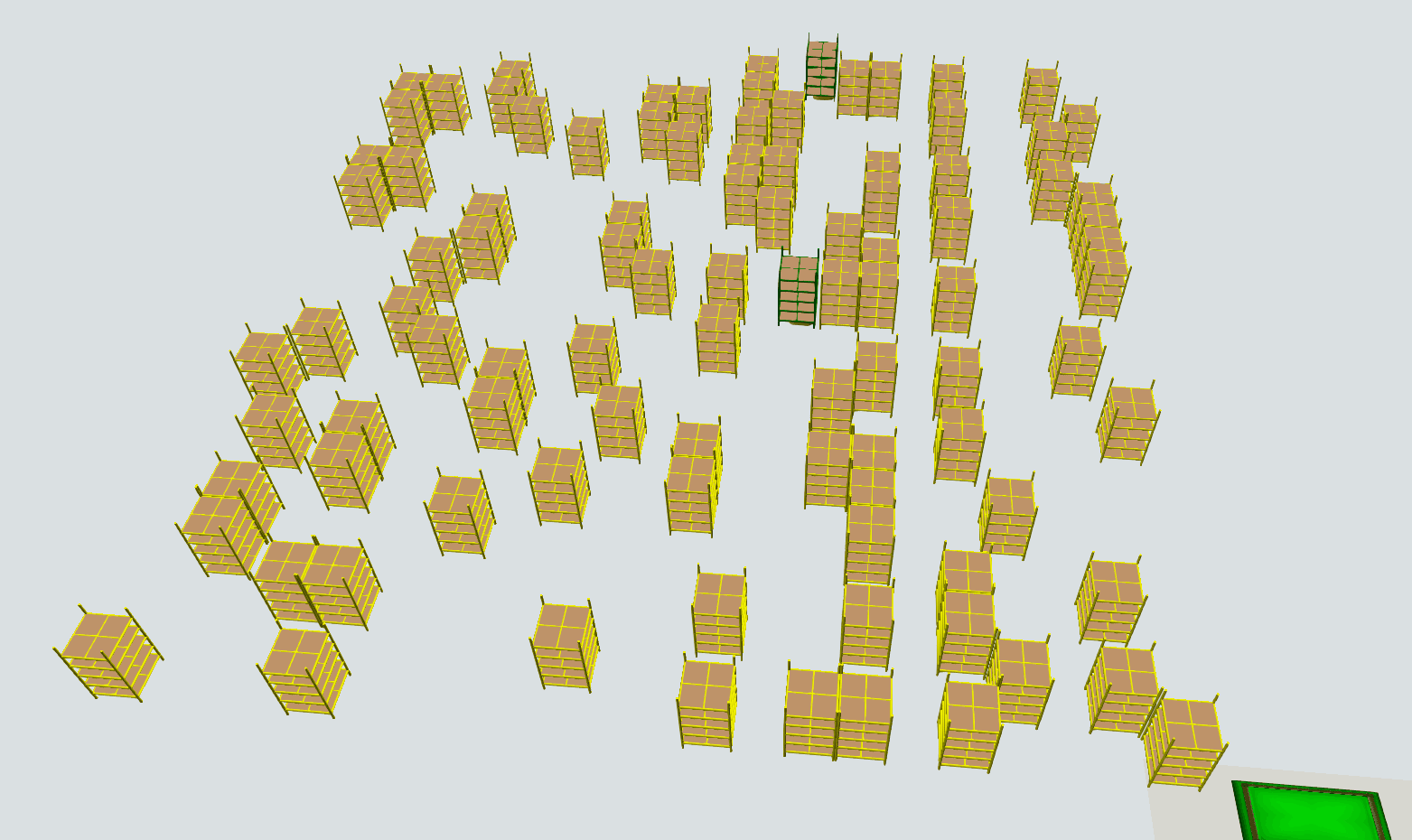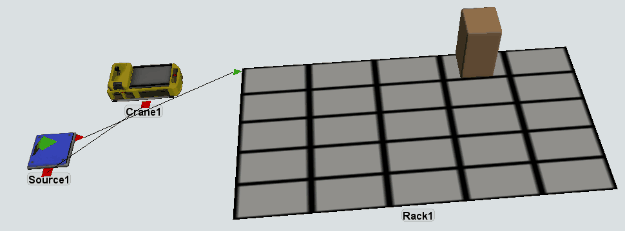I want to do a simulation of Kiva Systems (now owned by Amazon).
A Kiva system is laid out in a grid configuration.
If I use network nodes to set the routes and coupled with the collision problem, the result is the model will crash.
I want to do a simulation of Kiva Systems (now owned by Amazon).
A Kiva system is laid out in a grid configuration.
If I use network nodes to set the routes and coupled with the collision problem, the result is the model will crash.
At the moment FlexSim doesn't have a simple way of achieving this type of navigation system without lots of coding.
Something that you might consider doing is posting this as an "Idea" in the Development space on this Answers site. That will likely increase the possibility of this feature being added in future versions of FlexSim.
For reference, another user has asked a similar question here.
The 18.1 beta is available with new features on the A* Navigator for traveling only at right angles, rotating in place, collision detection, and routing based on travel time.
With these features, you can use the A* Navigator to simulate kiva systems.
As @Adrian Haws pointed out there isn't an existing module for everything you like to simulate. But Flexsim has the ability to let you build such a simulation model. Perhaps you need only some hints how to start. My approach would be to divide the problem into two independent systems. System 1 copes with the traveling of the Automated-Guided-Vehicles. They travel always only in one coordinate direction, in x or y at a time. The crane behaves similar by parameter setup for example. The Vehicles themself use the collision detection to by pass each other. The Vehicle which is loaded stays on track and has got a higher priority to achieve this.
System 2 consists of the management how to distinguish which shelves-objects has to be resorted in the area to get the one shelf to a picking station. A start could be a rack in floor storage mode. Maybe you can start with a rack size of 4 by 4 cells. Then you choose one item (shelf object) from the inside to be transported to a picking station. Then it is neccessary to move one of the surrounding items in the rack to another rack before you can transport the item you need to get to a picking station.
In my opinion it isn't necessary to use a path system at all whether it consists of the AGV-module or the network nodes. It is just a management of discrete travel distances ordered in a grid and the collision detection to let by pass the vehicles on their own.

Recently I get the idea to use a crane for the vehicle. The crane has the ability to travel seperately in directions. And it isn't necessary to let the crane lift the item. Only the look is really different to a normal taskexecuter or vehicle, but you can switch of the visibility of the whole crane structure and exchange the hook by another shape of a vehicle.
 grid-based-model-first-step.fsm
grid-based-model-first-step.fsm
You can build your own crane without the structure and save it as user library object. If you try this, you can copy the onDraw node from the standard taskexecuter out of the library. This node is in the Main Tree:
MAIN:/project/library/taskexecuters/TaskExecuter>behaviour/cppfunctions/onDraw
You find the node "ccpfunctions" in the crane object tree, too. Copy this node into there. But the node "cppfunctions" must be rebinded in the Object Attributes after that. The structure objects are under the drawsurrogate node. You can delete the content of this node. (Crane##>visual/drawsurrogate; Crane## is your object's name).
You find attached a simple example of this crane. If you drag the vehicle into the model, you have to zoom out to find the vehicle.
Thank you for answer my questions patiently ,then I will give it a try as you suggest.
11 People are following this question.
FlexSim can help you understand and improve any system or process. Transform your existing data into accurate predictions.
FlexSim is a fully 3D simulation software environment. FlexSim can be used to simulate any process in any industry.
FlexSim®, FlexSim Healthcare™, Problem Solved.®, the FlexSim logo, the FlexSim X-mark, and the FlexSim Healthcare logo with stylized Caduceus mark are trademarks of FlexSim Software Products, Inc. All rights reserved.
Privacy | Do not sell or share my personal information | Cookie preferences | Report noncompliance | Terms of use | Legal | © Autodesk Inc. All rights reserved